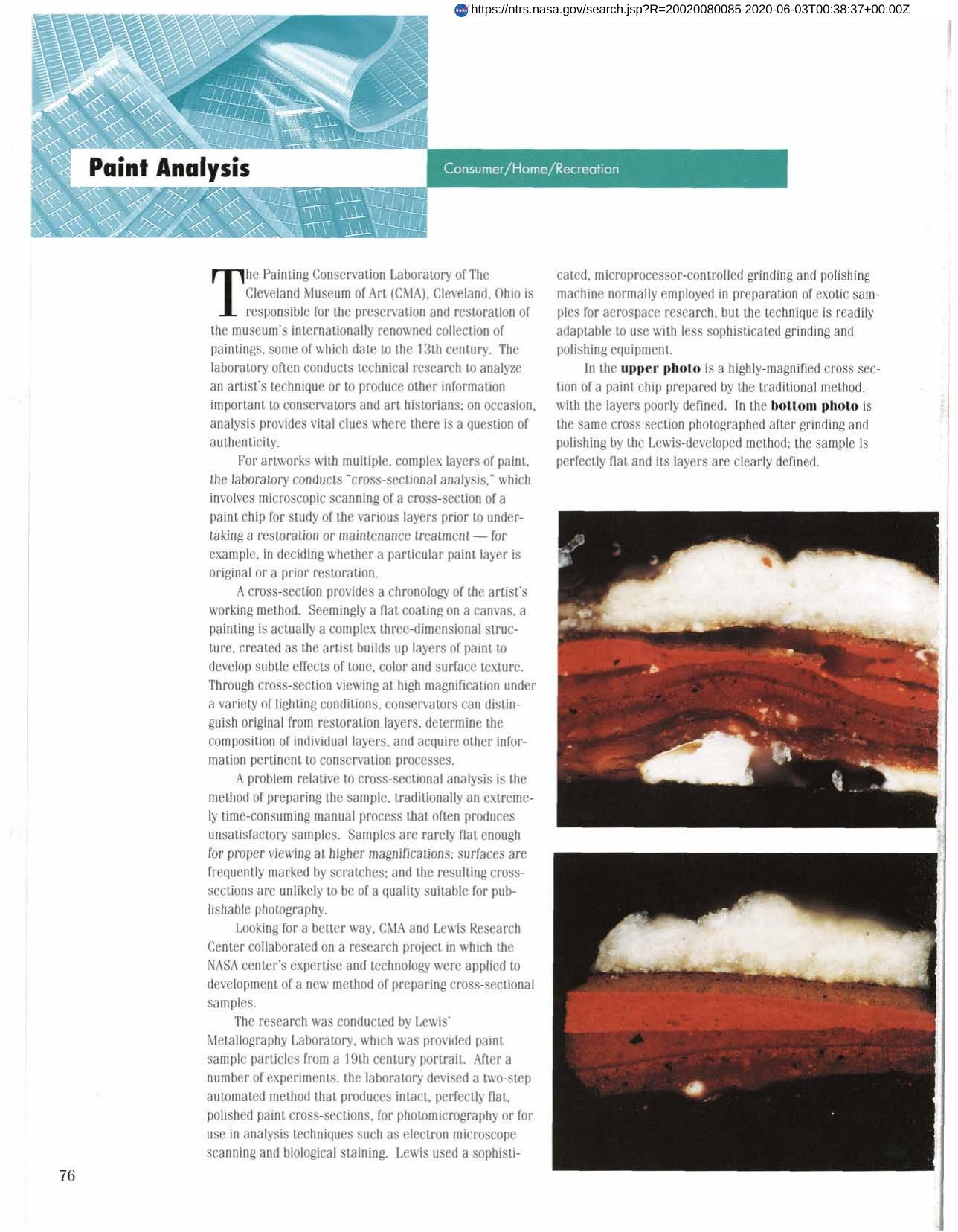
Paint Analysis
Lewis Research Center (LEW) has assisted The Cleveland Museum of Art (CMA) in analyzing the museum's paintings. Because of the many layers of paint that are often involved, this is a complex process. The cross-section of a paint chip must be scanned with a microscope to determine whether a paint layer is original or a restoration. The paint samples, however, are rarely flat enough for high magnification viewing and are frequently scratched. LEW devised an automated method that produces intact, flat, polished paint cross-sections. A sophisticated microprocessor-controlled grinding and polishing machine was manually employed in preparation of exotic samples for aerospace research was a readily adaptable technique. It produced perfectly flat samples with clearly defined layers. The process has been used successfully on a number of paintings, and LEW and CMA are considering additional applications.
Full article: http://hdl.handle.net/hdl:2060/20020080085

Paint Analysis

Paint Analysis













